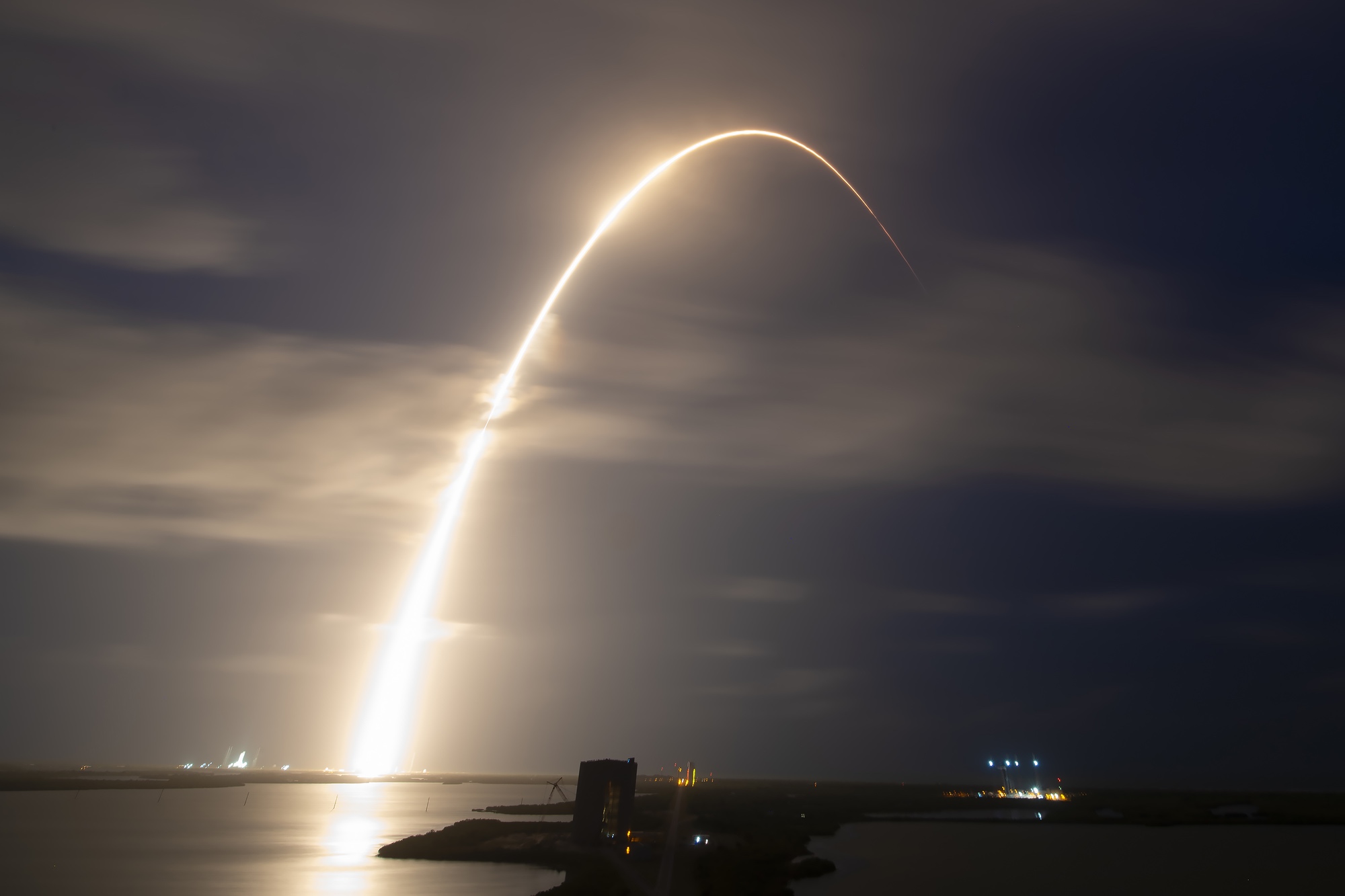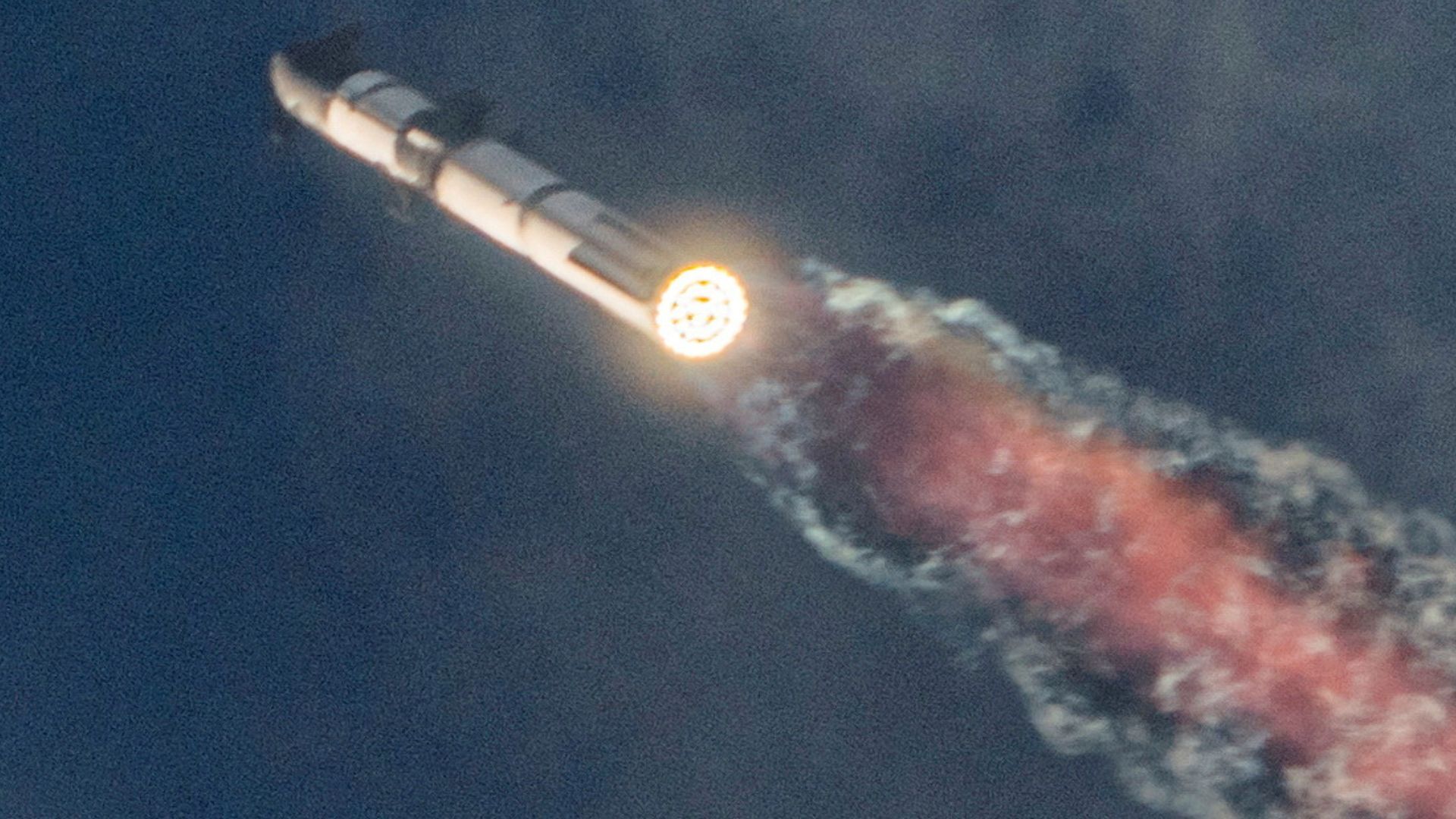Elon Musk's SpaceX successfully carried out the longest test flight of its massive Starship rocket, but it disintegrated upon its return to Earth. The unit was destroyed while approaching its landing point in the Indian Ocean.
Below are the most prominent details of the Starship missile and the American company’s launch on Thursday:
The spacecraft and the milestones it achieved on this journey
The test flight was the third for Musk and SpaceX, with his Starship rocket traveling halfway around Earth before re-entering the atmosphere.
The rocket, which consists of a spacecraft also called Starship, and a rocket booster known as Super Heavy, took off from SpaceX's private Starbase facility in Boca Chica, Texas, at 8:25 a.m. (13:25 GMT).
The rocket successfully opened and closed the payload doors while in orbit, transferred supercooled rocket propellant from one fuel tank to another, and performed a core maneuver with its super-heavy booster to begin its return to Earth. Analysts said these achievements have the potential to revolutionize space transportation and support NASA's mission to send astronauts to the moon.
Forty-five minutes after launch, the spacecraft began its descent into Earth's atmosphere, heading toward a landing in the Indian Ocean.
The spacecraft reached an altitude of more than 200 kilometers (125 miles) as it sailed across the Atlantic Ocean and southern Africa before approaching the Indian Ocean.
After about 49 minutes, contact with the Starship vehicle ended, and SpaceX confirmed that the rocket did not survive the return, and would likely disintegrate and fall into the ocean.
According to SpaceX CEO Musk, one of the goals of these initial flights was to get the spacecraft to orbital speeds, which are about 28,000 kilometers per hour (17,500 mph). Starship Hit the orbital velocity target.
This particular flight, by design, was not intended to circumnavigate the Earth. The ascent was smooth.
Super heavy booster
As the launch began, the rocket kicked into gear and propelled the rocket over the Gulf of Mexico.
The rocket was expected to assist in a controlled landing in the ocean, but it “did not ignite all the engines we expected, and we lost the booster,” SpaceX spokesman Dan Huett said.
“We will have to review the data to find out exactly what happened,” he added.
But it achieved what previous Super Heavy boosters could not. In two previous attempts, the Super Heavy booster was destroyed in mid-air before it could even attempt landing maneuvers.
Communication with the Starship was lost shortly after a live video feed captured high-resolution images from a camera mounted on the rover. The footage revealed a reddish glow enveloping the silver spacecraft, due to the intense friction as it returned during its descent toward Earth. SpaceX officials said they aim to conduct at least six more Starship test flights this year.
According to experts, despite the hiccups, SpaceX is making notable progress toward its goals.
SpaceX is 22 years old today. “The company announced its plans for Starship in 2015. This is the third in-flight test of this rocket system in less than a year, so they are certainly making very big strides toward that goal,” said Amy Lynn Thompson. , a Florida-based space expert and science journalist for Al Jazeera.
The spacecraft reenters Earth's atmosphere. Views through plasma pic.twitter.com/HEQX4eEHWH
— SpaceX (@SpaceX) March 14, 2024
Artemis program
NASA wants to use Starship to return astronauts to the Moon for the first time in more than 50 years as part of the Artemis program. In 2021, the US Space Agency awarded SpaceX Contract worth $2.89 billion For this mission, an additional agreement worth $1 billion followed.
SpaceX has also set itself the goal of transporting humans to Mars. One of SpaceX's stated primary goals is to make humans a living being Multi-planetary species As a precautionary measure in case the land becomes uninhabitable.
“We're trying to build something capable of creating a permanent base on the Moon and a city on Mars. That's why [Starship] “It's very big,” Musk said in October.
“Otherwise we can make it much smaller,” he added.
The powerful rocket can lift five times the amount of material into space as the second largest vehicle available. According to SpaceX's plan, Starship could carry 100 people into orbit at one time. The largest number of people ever in space at one time It was 20was recorded briefly in January.
SpaceX aims to make both the spacecraft's lower rocket booster and the spacecraft's upper stage capable of flying again and again. Reusability provides SpaceX with the opportunity to reduce the costs of launching satellites as well as transporting the people and resources needed to sustain life in space.
“With each flight test, SpaceX is trying to achieve increasingly ambitious goals for Starship to learn as much as possible in order to develop future mission systems. The ability to test key systems and processes in scenarios Flying such integrated tests allows NASA and SpaceX to collect critical data needed for the continued development of Starship HLS.Marshall Space Flight Center in Huntsville, Alabama.
How did others react?
NASA Administrator Bill Nelson congratulated SpaceX on what he called a “successful test flight.”
congratulations for @SpaceX On a successful test flight! The spacecraft has risen into the sky. Together, we are making great strides through Artemis to return humanity to the Moon, and then look to Mars. https://t.co/VXq8Vp1sAc
– Bill Nelson (@SenBillNelson) March 14, 2024
SpaceX President and Chief Operating Officer Gwen Shotwell celebrated the achievement on the X while providing a summary of what has been accomplished.
happy Birthday to @SpaceX! what a day!
Huge congratulations to the whole team on an amazing day: clean count (glad the shrimp made it out in time!), takeoff, hot staging, super heavy boost aft and coast (and likely two engines making the main stage… pic.twitter.com/D3YUPIgKNH
– Gwynne Shotwell (@Gwynne_Shotwell) March 14, 2024
Jeff Bezos' Blue Origin congratulated SpaceX. Bezos and Musk are competitors in the space industry.
Congratulations to the SpaceX team!
– Blue Origin (@blueorigin) March 14, 2024

“Amateur organizer. Wannabe beer evangelist. General web fan. Certified internet ninja. Avid reader.”







More Stories
Falcon 9 launches the Galileo navigation satellites
An unprecedented meteorite discovery challenges astrophysical models
SpaceX has launched a Falcon 9 rocket on its record-setting 20th mission